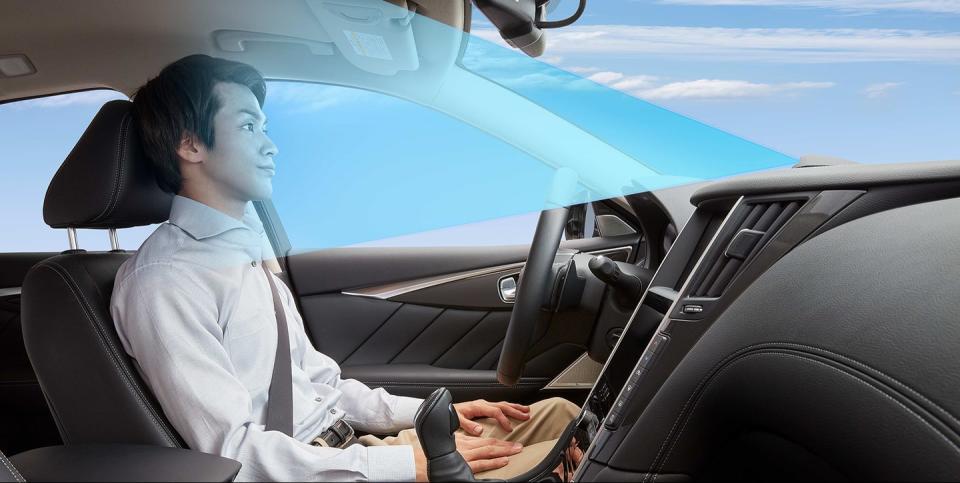IIHS Will Rate Driver Attention Monitoring Tech

The IIHS will begin issuing ratings to driver monitoring systems (DMS) in vehicles with advanced driver assist systems (ADAS) and more capable semi-autonomous systems.
The institute will issue one of four possible ratings to driver monitoring systems: good, acceptable, marginal, or poor, based on how well they keep track of driver attention and what kinds of warning they provide, in addition to steps systems take to compel attention.
Several new Level 2 and Level 3 systems will arrive on the market in the next two years, with some manufacturers about to begin introducing Level 3 systems that do not require drivers to keep their hands on the steering wheel or eyes on the road.
With a growing number of advanced driver assistance systems, as well as tech that purports to offer self-driving capabilities, a ratings program that examines driver safeguards in such systems has been overdue. The Insurance Institute for Highway Safety (IIHS) is now taking that step and is developing a ratings program that will evaluate safeguards in vehicle models that currently offer partial automation, just as their numbers and capabilities are expected to grow in the coming months and years.
The institute says that such safeguards will receive one of four possible ratings: good, acceptable, marginal, or poor.
"So far, even the most advanced systems require active supervision by the driver," the IIHS notes. "However, some manufacturers have oversold the capabilities of their systems, prompting drivers to treat the systems as if they can drive the car on their own. In egregious cases, drivers have been documented watching videos or playing games on their cellphones or even taking naps while speeding down the expressway."
In order to earn a good rating, a system should employ several types of alerts to remind the driver to look at the road and place their hands on the steering wheel if the system detects that they are doing otherwise. Such alerts have to start immediately and escalate, and may include vibrations, chimes, seatbelt tightening, or brake pulsing, and begin to slow the vehicle down and bring it to a stop if the driver does not respond, locking the driver out of the system thereafter, the IIHS says, until the car is restarted.
To earn a good rating, such systems must also also use a number of driver attention monitoring techniques, including tracking the position of the eyes and head, as well as making sure the driver's hands are on the steering wheel.
With more Level 2 systems—analogous to Tesla's Autopilot and FSD—on the way from other automakers, and Level 3 systems inching to the US market, the issue of consumer safety in using these systems is about to become more important than ever before, especially as automakers and developers try to stretch the capabilities of Level 2 systems, coupling them with marketing efforts that at times greatly overstate their capabilities.
"The way many of these systems operate gives people the impression that they're capable of doing more than they really are," said IIHS Research Scientist Alexandra Mueller, who is spearheading the new ratings program. "But even when drivers understand the limitations of partial automation, their minds can still wander. As humans, it's harder for us to remain vigilant when we're watching and waiting for a problem to occur than it is when we're doing all the driving ourselves."
The IIHS' rating system will focus on driver safeguards, as the issue of system abilities in detecting (or not detecting) things like solid objects in the vehicle's path is a separate issue. So the IIHS, under this effort, will not seek to rate these systems in their performance on the road, which would be a distinct and more nuanced evaluation program. This particular effort will focus solely on just how well such systems monitor what the driver is doing—or not doing—while such systems are engaged.
"Despite misleading messaging from some manufacturers, for now, at least, self-driving cars are not available to consumers," the IIHS adds. "What many vehicles on the market do have is partial automation. The human driver must still handle many routine driving tasks that the systems aren't designed to do. The driver also has to monitor how well the automation is performing its tasks and always be ready to take over if anything goes wrong."
The IIHS plans to issue the first such ratings later this year.
Do you think rating how well these systems monitor driver attention is a good idea? Share your thoughts in the comments below.

 Yahoo Autos
Yahoo Autos 